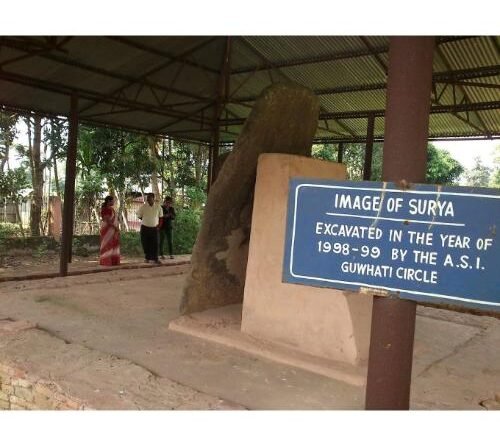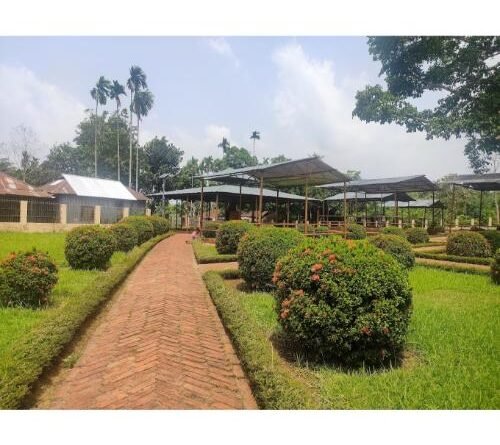Shiv Mandir/Pilak Historical Palace (Shyam Sundar Ashram) Paschim Pillak,Tripura
Pilak is an archaeological site in the Santirbazar sub-division of South Tripura district of the Indian state of Tripura. Many images and structures, belonging to Buddhist and Hindu sects, have been discovered here since 1927. The antiquities found here are dated to 8th to 12th centuries.
Sandstone sculptures of the Pilak site, which represent a heterodox culture of Hinduism and Buddhism of 9th to 13th century, are on display at the Tripura Government Museum.
Pilak site is located at Jolaibari, in South Tripura, and is spread over an area of about 10 square kilometres (3.9 sq mi). It is 100 kilometres (62 mi) away from Agartala, 51 kilometres (32 mi) from Udaipur, Santibazar is 18 kilometres (11 mi) away, and 3 kilometres (1.9 mi) from Jolaibari. The sites excavated are in Shyam Sundar Tilla, Deb Bari, Thakurani Tilla, Balir Pathar, Basudeb Bari and others.
History
The archaeological site used to be a part of Samatata kingdom in historical Bengal. It is part of a series of archaeological sites that includes Mainamati and Somapura Mahavihara in Bangladesh. The earliest dates of Hindu and Buddhist sculptures, terracotta plaques and seals found at the site are between 8th and 9th centuries. The artifacts unearthed at the site belong to the Bengal’s Palas and Guptas sculptural and architectural features; also the style of the Arakan, Myanmar (earlier known as Burma) and indigenous features is noticeable.
The Archaeological Survey of India (ASI) carried out excavations at the site in early 1960s when stupas built with bricks were found. Recent investigations by ASI was at Jolaibārī and other mounds where statues of Buddha and idols of Mahayana Buddhism were unearthed. ASI has taken over the site since 1999 and is responsible for its maintenance. Buddhist tourists from Tibet, Southeast Asia and Japan often visit the place. The Dalai Lama of Mahayana Buddhism visited the site (of the Theravada or Hinayana sect) in 2007.
The Pilak archaeological site represents both Hinduism and Buddhism co-existing peacefully. Artifacts of Hinduism are in the form of sculptures and plaques of Hindu gods Shiva, Surya, and Baishnabi. Large number of antiquities pertain to the Hinayana, Mahayana, Vajrayana Buddhism practices. The site is strewn with a large number of terracotta plaques and statues. Very large stone sculptures of Avalokiteśvara and Narasimha have been unearthed at the site.
A Hindu religious terracotta image made in fired clay found at Pilak is of Trimurti. Another image found here from the Sagardheba mound is of Surya, the Sun God, riding a chariot driven by seven horses, dated to 7th-9th century, which is deified in a temple in the Rajesvari Ashram in Muhuripur.
















